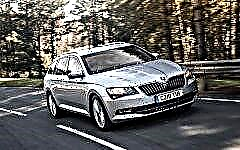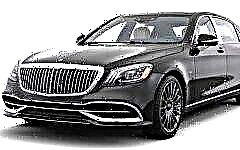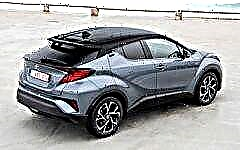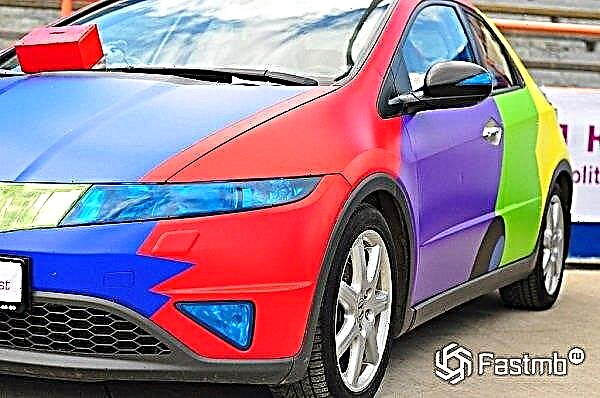

The content of the article:
- Economical "Chinese"
What kind of cars do Russian car owners dream of owning, based on real possibilities? Inexpensive, stylish and reliable.
Given that the Chinese car market is overcrowded, manufacturers are actively looking for countries where they can supply their goods. So there are more and more cars from the Middle Kingdom on Russian roads. Experts authoritatively argue that the volume of "Chinese" sold in Russia has grown by ten percent over the past year.
The cost of fuel is constantly growing steadily, therefore, for some motorists, when choosing an "iron horse", it is important how much fuel it consumes. Unfortunately, most Chinese cars cannot offer super fuel efficient engines capable of absorbing three to five liters of fuel.
The engines of the "Chinese" are simple, small in volume, but they are not able to produce high power on a small volume, saving fuel, as the masters of the European automobile industry do.
Economical "Chinese"
1. GAC Trumpchi GS4

Fuel consumption: 1.3 liters per 100 km.
Apart - and the very first in the TOP - is a mid-size crossover with a rechargeable hybrid and a modified body to a coupe. Electrification has allowed the GS4 PHEV, which is as big as the Kia Sportage SUV, to consume an extremely small amount of gasoline.
Pros:
- low fuel consumption;
- good "stuffing" of the salon.
Minuses:
- not the best soundproofing;
- weak off-road qualities.
The hybrid is identical to the brand's traditional crossover, the electrified version features blue grille-mounted inserts, nameplates and a charging connector.
The interior has been slightly more modified, a new dashboard skin design, decor materials have been added, and a new remote control for selecting the driving mode under the gear selector.
The 1.5-liter turbocharged gasoline engine produces 150 hp, but the data on the power of the electric motor has not been disclosed yet, it is only known that the maximum performance is slightly more than 200 hp.
The body of the cross-coupe has a fashionable original silhouette, which speaks of the sporty character of the car. There are much more changes in the new body than in the typical "tracing paper" of the old model.
The GS4 Coupe is nearly the size of the Renault Arkana. Technically, the cross-coupe version is an SUV with a turbocharged 1.5-liter engine (169 hp), front-axle drive and a six-speed manual / automatic transmission.
2. Changan Alsvin
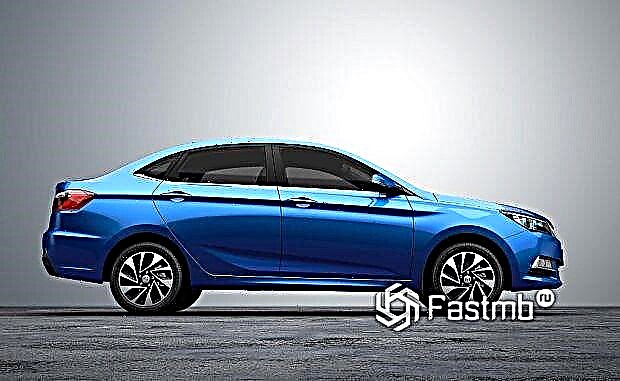
In the photo: Changan Alsvin V7
Fuel consumption: 5.5 liters per 100 km.
If we talk about fuel consumption, then Alsvin, which is expected to enter the market in the second half of 2020, is a good working machine with decent looks and high-quality options.
Externally, along the wheelbase, the car is a cross between VW Polo sedan and Lada Granta. Equipped with a 1.4 liter engine (99.9 hp) and a five-speed manual gearbox.
Pros:
- quite complete set;
- small price.
Minuses:
- it is difficult to draw conclusions before use.
The equipment is pleasant, quite sufficient for a comfortable driving, and even more so sufficient for the announced price tag. For half a million rubles are offered:
- electric power steering;
- two pillows in the front;
- alloy 14-inch wheels;
- multi-wheel;
- multimedia system with a 7-inch touchscreen;
- two USB connectors;
- Bluetooth;
- air conditioning;
- Rear View Camera;
- power windows for all windows;
- electric adjustment of mirrors;
- two speakers.
The top-of-the-line equipment will additionally be equipped with driver-assisting systems: traction control, stabilization, pumping up pressure in the wheels, helping to get under way uphill, rear parking sensors and many other pleasant options.
If the Chinese leave the prices unchanged, the car - whatever shortcomings they find later, will sell well, because it looks good enough, turns out to be more capacious in size than the Granta, and is quite economical. It remains only to wait for the car to reach Russian showrooms in the second half of 2020.
3. Qoros 3
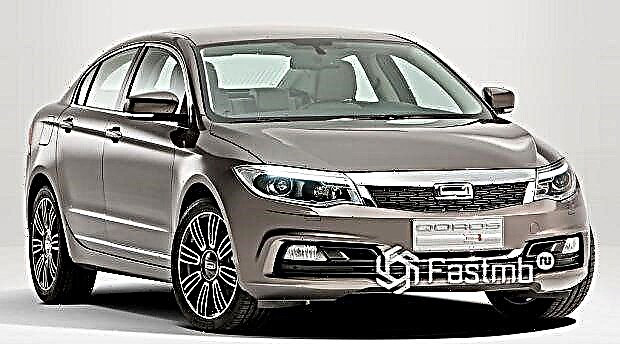
Fuel consumption: 6.0 liters per 100 km.
The Qoros brand is not very well known in the Russian market, which does not mean that in terms of quality it is somehow worse than the already well-promoted ones. The development was carried out jointly with engineers from Israel, giving the car an original design, not similar to modern European or American cars.
Pros:
- quality that is not inferior to European (according to the manufacturer);
- low fuel consumption;
- high ground clearance.
Minuses:
- high price.
The car is not replicated in the domestic market, so it is difficult to judge its disadvantages in practice. The development of the machine was put into practice in 2013, but only now, after the start of overproduction in China, it reached Russia. Cars with 126/156 hp "output" are offered.
The turbocharged engine with the possible installation of a "robot" box became the "chip". The basic configuration includes everything you need - from climate control and airbags, ABS and EBD, ESP to full power accessories and a powerful audio system. The car's price tag starts at a million rubles.
4. Brilliance H230

Fuel consumption: 6.3 liters per 100 km.
A small city car did not go beyond the boundaries of the class of inexpensive small cars. The engine is capable of gaining power of 102 hp, and due to the low power, low fuel consumption is obtained.
Pros:
- stylish appearance;
- low price;
- low cost of service.
Minuses:
- noise in the cabin due to poor sound insulation;
- rigid suspension;
- low power engine.
The price of a brand new H230 starts at 460,000 rubles, which is an absolute plus for Russia. Low engine consumption and compact dimensions make the car quite acceptable for city trips.
The trim is surprisingly well done for a cheap car, no harsh plastic smell. Options are minimal, but sufficient for life: full power accessories, front airbags, ABS / EBD, on-board computer, air conditioning, audio system.
5. Chery Kimo

Fuel consumption: 6.5 liters per 100 km.
The Chery brand has taken root quite well in Russia, having been promoted through the sale of Tiggo and Amulet cars. Another "novelty" - Kimo, has been known since the early 2000s, but due to the massive outflow of cars from China, it was again actively positioned on the market as an inexpensive car with low gas consumption and a significant base of options for girls and women.
It is advertised as a city car, convenient for parking in limited space and sufficient for everyday trips. So this new is essentially a well-forgotten old one without restyling, but quite budgetary and economical.
Pros:
- low fuel consumption;
- low cost of service;
- good maneuverability.
Minuses:
- excessive suspension rigidity;
- low quality paintwork;
- small trunk volume.
The small trunk is complemented by a spacious interior. There are two models in total, designed for engines of 1.1 liters (68 hp) and 1.3 liters (86 hp). The most economical engine is 1.3 liters. The basic configuration has everything you need from an air conditioner to a standard kit responsible for the safety of passengers.
6. FAW Besturn B30 2020

Fuel consumption: 6.5 liters per 100 km.
Another novelty from the FAW company, which meets the demands of the European and Russian markets, is presented by the upgraded FAW Besturn B30 2020 post-styled sedan.
The car did not acquire any starting or high-speed new characteristics, the fabric and plastic remained budgetary, but on the other hand, in terms of the comfort of the landing seats and the technical equipment of the interior, it reached the European level.
Pros:
- comfortable lounge;
- low fuel consumption;
- relatively inexpensive price with a price / quality ratio.
Minuses:
- lack of traction reserve in sudden changes in the road situation.
The top modification of the car is complemented by climate control, a sophisticated multimedia system, parking sensors, monitoring of "blind" zones and advanced functionality responsible for safety.
The advantage of the previously used front-wheel drive platform model from the Volkswagen Jetta remains. The 1.6-liter engine delivers 106 hp. and is aggregated with a five-band "automatic". The starting dynamics and acceleration ability are sufficient for driving in heavy traffic within the city, but not sufficient for emergency maneuvers.
The price tag of the model starts from 600,000 rubles, reaching "in the top" up to 850,000 rubles. The first cars will arrive in Russian showrooms at the end of the first quarter of 2020.
7. Chery Arizzo GX

Fuel consumption: 6.4-6.6 liters per 100 km.
The car is a pilot project created on the basis of the M1X and unified for the E1X crossover bogie, but in reality it is just a restyling of the promoted Chery Arrizo 5.
Such complex gestures were made to elevate the sedan to the level of European car brands. The price of the car will range from 680,000 rubles for the basic configuration to a million for the top one.
Pros:
- European quality (according to the manufacturer's statement);
- bright appearance;
- high-quality interior trim.
Minuses:
- will be detected during operation.
Equipped with engines of two volumes - a 1.5-liter biturbo (156 hp) and a similar aspirated. It can be installed, depending on the type of engine, either 5-position "mechanics" or "robot" in 7/9 steps.
In the basic version, the car receives air conditioning, parking sensors, ABS / EBD, halogen optics, front airbags, and electric window lifters.
8. Lifan Solano II

Fuel consumption: 6.5-7 liters per 100 km.
The family sedan for city trips is rich in equipment and a budget price tag. The car has a pleasant appearance, a roomy interior and a good chassis.
Pros:
- comfortable lounge;
- large trunk;
- soft suspension.
Minuses:
- problematic steering rack;
- insufficient anti-corrosion protection;
- poor sound insulation.
The city car in the basic configuration allows you to move around the city comfortably, being economical, simple and low in service price.
Experts also note an unexpectedly high level of security. For 600,000 rubles, the buyer receives an air conditioner, full power accessories, music, an on-board computer, front airbags, ABS / EBD. There is a choice of 1.5 liter (100 hp) and 1.8 liter (125 hp) petrol engines. The second motor is equipped with an automatic transmission.
9. Geely Emgrand 7

Fuel consumption: 7.5 liters.
Emgrand 7 is a Chinese "middling", offering for a reasonable price (760,000 rubles) business class options in the basic configuration, full power accessories, air conditioning, front airbags, ABS / EBD, parking sensors, audio system, USB. Engines are available in 1.5 liters (103 hp) and 1.8 liters (133 hp).
Pros:
- comfortable lounge;
- good materials;
- decent equipment.
Minuses:
- insufficient anti-corrosion protection;
- non-budget spare parts;
- noisy salon.
You can choose to order a car with automatic transmission or manual transmission. The car is positioned as a family car that fits perfectly into city traffic.
10. Chery Tiggo

Fuel consumption: 8.75 liters per 100 kilometers.
Another sold car from the Chery brand promoted in Russia is Tiggo.
Pros:
- seven-seater salon;
- high quality finishing materials;
- bright appearance.
Minuses:
- low level of seat comfort;
- a weak motor for a heavy machine.
The 2020 model comes with 1.8 / 2.0 / 2.4 liter petrol engines, aggregated by "automatic" or "mechanics" of choice. The manufacturer guarantees, and tests confirm, that in urban areas the car with the weakest engine consumes up to 10 liters of fuel, and on the highway - 7.5 liters. We agree that this is a good result for a seven-seat crossover.
Aggressive design dominates in the exterior; good multimedia and high-quality finishing materials are striking in the cabin. The price of a car of a sample of 2020 is from a million rubles.
Conclusion
Chinese cars are not always a high quality product, but there are plenty to choose from with a small budget. In any case, the basic equipment will always be more generous than the "Europeans".


